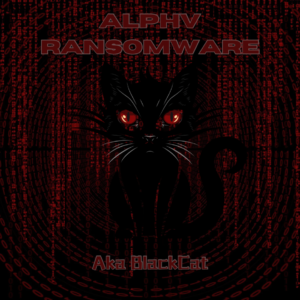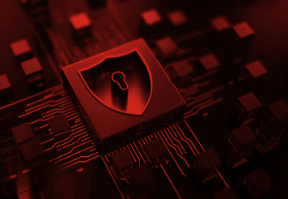Understanding ALPHV Ransomware: A Growing Cyber Threat

In the constantly changing realm of cybersecurity threats, ALPHV ransomware, also referred to as BlackCat, has become a significant menace. Since its appearance in 2021, this advanced ransomware has been recognized for its distinctive characteristics and profound effects on its victims. Here’s an overview of ALPHV ransomware and tips on how to defend against it.
What Makes ALPHV Unique?
ALPHV stands out primarily because it is one of the first ransomware families written in Rust, a programming language celebrated for its performance and security features. This choice of language offers the ransomware flexibility and efficiency, making it a potent tool in the hands of cybercriminals.

Key Characteristics
1. Double Extortion Tactics: ALPHV not only encrypts the victim’s data but also exfiltrates it. This means attackers can demand a ransom for both decrypting the data and preventing its public release, doubling the pressure on victims.
2. Highly Customizable: The ransomware can be tailored to target specific systems and environments, enhancing its effectiveness and the likelihood of a successful attack.
3. Ransomware-as-a-Service (RaaS): ALPHV operates under a RaaS model, where developers lease the ransomware to affiliates. These affiliates carry out the attacks and share the ransom payments with the developers, expanding the ransomware’s reach and impact.
4. Sophisticated Evasion Techniques: ALPHV employs advanced methods to evade detection by security solutions and ensures persistence on infected systems, making it difficult to eradicate.
The Impact of ALPHV Ransomware
The consequences of an ALPHV attack can be devastating. Victims often face:
- Data Loss and Encryption: Critical data becomes inaccessible, disrupting business operations.
- Financial Losses: Besides the ransom payment, victims incur costs related to downtime, data recovery, and potential regulatory fines.
- Reputational Damage: Public exposure of sensitive data can harm an organization’s reputation, eroding customer trust and confidence.

Mitigating the Threat
To defend against ALPHV ransomware, organizations should adopt a multi-faceted approach:
- Regular Backups: Maintain regular, offline backups of critical data to ensure recovery without paying the ransom.
- Security Awareness Training: Educate employees about phishing and other common attack vectors to prevent initial compromise.
- Up-to-Date Security Solutions: Employ comprehensive security measures that can detect and respond to ransomware threats effectively.
- Incident Response Plan: Develop and routinely update an incident response plan to ensure a swift and effective reaction to ransomware incidents.
Staying Ahead of the Threat
As ALPHV continues to develop, it is essential to stay informed about its methods and uphold strong cybersecurity practices. Organizations need to be vigilant and proactive to effectively defend against this escalating cyber threat. By comprehending and applying these strategies, businesses can reduce the risks associated with ALPHV ransomware and protect their critical assets from attacks.
